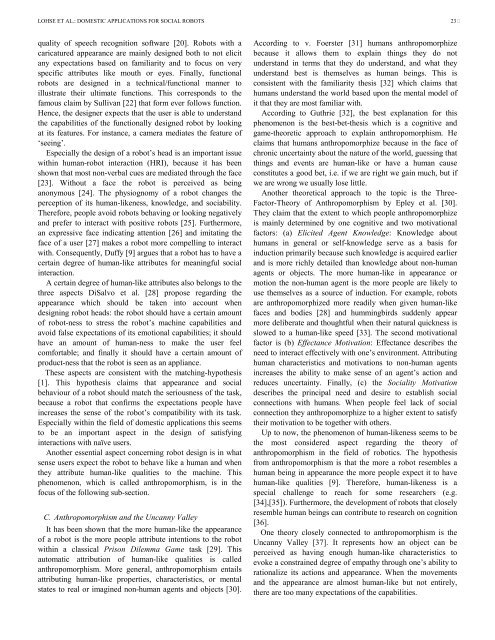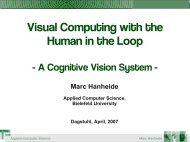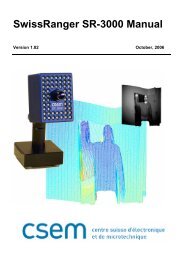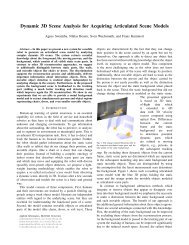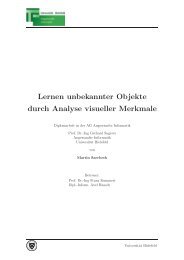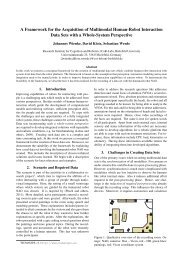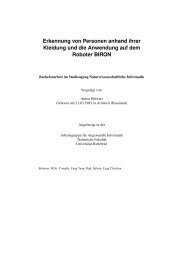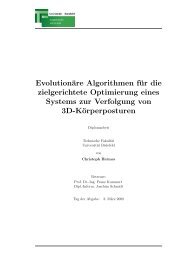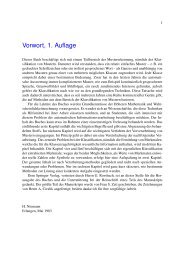Domestic Applications for Social Robots - Journal of Physical Agents
Domestic Applications for Social Robots - Journal of Physical Agents
Domestic Applications for Social Robots - Journal of Physical Agents
Create successful ePaper yourself
Turn your PDF publications into a flip-book with our unique Google optimized e-Paper software.
LOHSE ET AL.: DOMESTIC APPLICATIONS FOR SOCIAL ROBOTS 23<br />
quality <strong>of</strong> speech recognition s<strong>of</strong>tware [20]. <strong>Robots</strong> with a<br />
caricatured appearance are mainly designed both to not elicit<br />
any expectations based on familiarity and to focus on very<br />
specific attributes like mouth or eyes. Finally, functional<br />
robots are designed in a technical/functional manner to<br />
illustrate their ultimate functions. This corresponds to the<br />
famous claim by Sullivan [22] that <strong>for</strong>m ever follows function.<br />
Hence, the designer expects that the user is able to understand<br />
the capabilities <strong>of</strong> the functionally designed robot by looking<br />
at its features. For instance, a camera mediates the feature <strong>of</strong><br />
‘seeing’.<br />
Especially the design <strong>of</strong> a robot’s head is an important issue<br />
within human-robot interaction (HRI), because it has been<br />
shown that most non-verbal cues are mediated through the face<br />
[23]. Without a face the robot is perceived as being<br />
anonymous [24]. The physiognomy <strong>of</strong> a robot changes the<br />
perception <strong>of</strong> its human-likeness, knowledge, and sociability.<br />
There<strong>for</strong>e, people avoid robots behaving or looking negatively<br />
and prefer to interact with positive robots [25]. Furthermore,<br />
an expressive face indicating attention [26] and imitating the<br />
face <strong>of</strong> a user [27] makes a robot more compelling to interact<br />
with. Consequently, Duffy [9] argues that a robot has to have a<br />
certain degree <strong>of</strong> human-like attributes <strong>for</strong> meaningful social<br />
interaction.<br />
A certain degree <strong>of</strong> human-like attributes also belongs to the<br />
three aspects DiSalvo et al. [28] propose regarding the<br />
appearance which should be taken into account when<br />
designing robot heads: the robot should have a certain amount<br />
<strong>of</strong> robot-ness to stress the robot’s machine capabilities and<br />
avoid false expectations <strong>of</strong> its emotional capabilities; it should<br />
have an amount <strong>of</strong> human-ness to make the user feel<br />
com<strong>for</strong>table; and finally it should have a certain amount <strong>of</strong><br />
product-ness that the robot is seen as an appliance.<br />
These aspects are consistent with the matching-hypothesis<br />
[1]. This hypothesis claims that appearance and social<br />
behaviour <strong>of</strong> a robot should match the seriousness <strong>of</strong> the task,<br />
because a robot that confirms the expectations people have<br />
increases the sense <strong>of</strong> the robot’s compatibility with its task.<br />
Especially within the field <strong>of</strong> domestic applications this seems<br />
to be an important aspect in the design <strong>of</strong> satisfying<br />
interactions with naïve users.<br />
Another essential aspect concerning robot design is in what<br />
sense users expect the robot to behave like a human and when<br />
they attribute human-like qualities to the machine. This<br />
phenomenon, which is called anthropomorphism, is in the<br />
focus <strong>of</strong> the following sub-section.<br />
C. Anthropomorphism and the Uncanny Valley<br />
It has been shown that the more human-like the appearance<br />
<strong>of</strong> a robot is the more people attribute intentions to the robot<br />
within a classical Prison Dilemma Game task [29]. This<br />
automatic attribution <strong>of</strong> human-like qualities is called<br />
anthropomorphism. More general, anthropomorphism entails<br />
attributing human-like properties, characteristics, or mental<br />
states to real or imagined non-human agents and objects [30].<br />
According to v. Foerster [31] humans anthropomorphize<br />
because it allows them to explain things they do not<br />
understand in terms that they do understand, and what they<br />
understand best is themselves as human beings. This is<br />
consistent with the familiarity thesis [32] which claims that<br />
humans understand the world based upon the mental model <strong>of</strong><br />
it that they are most familiar with.<br />
According to Guthrie [32], the best explanation <strong>for</strong> this<br />
phenomenon is the best-bet-thesis which is a cognitive and<br />
game-theoretic approach to explain anthropomorphism. He<br />
claims that humans anthropomorphize because in the face <strong>of</strong><br />
chronic uncertainty about the nature <strong>of</strong> the world, guessing that<br />
things and events are human-like or have a human cause<br />
constitutes a good bet, i.e. if we are right we gain much, but if<br />
we are wrong we usually lose little.<br />
Another theoretical approach to the topic is the Three-<br />
Factor-Theory <strong>of</strong> Anthropomorphism by Epley et al. [30].<br />
They claim that the extent to which people anthropomorphize<br />
is mainly determined by one cognitive and two motivational<br />
factors: (a) Elicited Agent Knowledge: Knowledge about<br />
humans in general or self-knowledge serve as a basis <strong>for</strong><br />
induction primarily because such knowledge is acquired earlier<br />
and is more richly detailed than knowledge about non-human<br />
agents or objects. The more human-like in appearance or<br />
motion the non-human agent is the more people are likely to<br />
use themselves as a source <strong>of</strong> induction. For example, robots<br />
are anthropomorphized more readily when given human-like<br />
faces and bodies [28] and hummingbirds suddenly appear<br />
more deliberate and thoughtful when their natural quickness is<br />
slowed to a human-like speed [33]. The second motivational<br />
factor is (b) Effectance Motivation: Effectance describes the<br />
need to interact effectively with one’s environment. Attributing<br />
human characteristics and motivations to non-human agents<br />
increases the ability to make sense <strong>of</strong> an agent’s action and<br />
reduces uncertainty. Finally, (c) the <strong>Social</strong>ity Motivation<br />
describes the principal need and desire to establish social<br />
connections with humans. When people feel lack <strong>of</strong> social<br />
connection they anthropomorphize to a higher extent to satisfy<br />
their motivation to be together with others.<br />
Up to now, the phenomenon <strong>of</strong> human-likeness seems to be<br />
the most considered aspect regarding the theory <strong>of</strong><br />
anthropomorphism in the field <strong>of</strong> robotics. The hypothesis<br />
from anthropomorphism is that the more a robot resembles a<br />
human being in appearance the more people expect it to have<br />
human-like qualities [9]. There<strong>for</strong>e, human-likeness is a<br />
special challenge to reach <strong>for</strong> some researchers (e.g.<br />
[34],[35]). Furthermore, the development <strong>of</strong> robots that closely<br />
resemble human beings can contribute to research on cognition<br />
[36].<br />
One theory closely connected to anthropomorphism is the<br />
Uncanny Valley [37]. It represents how an object can be<br />
perceived as having enough human-like characteristics to<br />
evoke a constrained degree <strong>of</strong> empathy through one’s ability to<br />
rationalize its actions and appearance. When the movements<br />
and the appearance are almost human-like but not entirely,<br />
there are too many expectations <strong>of</strong> the capabilities.


